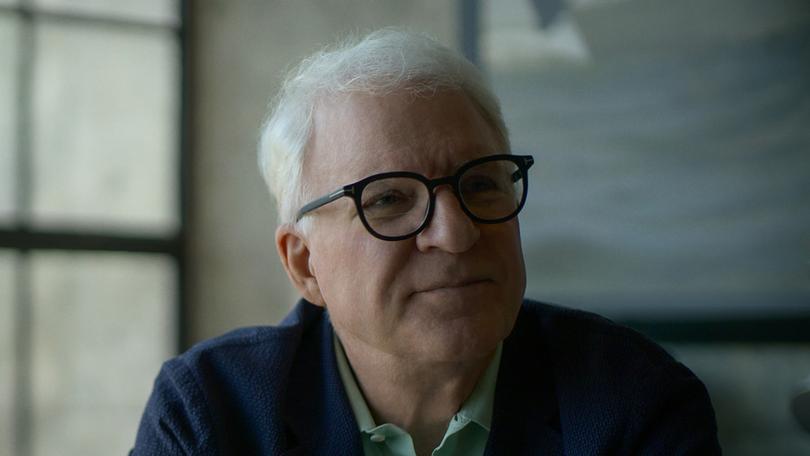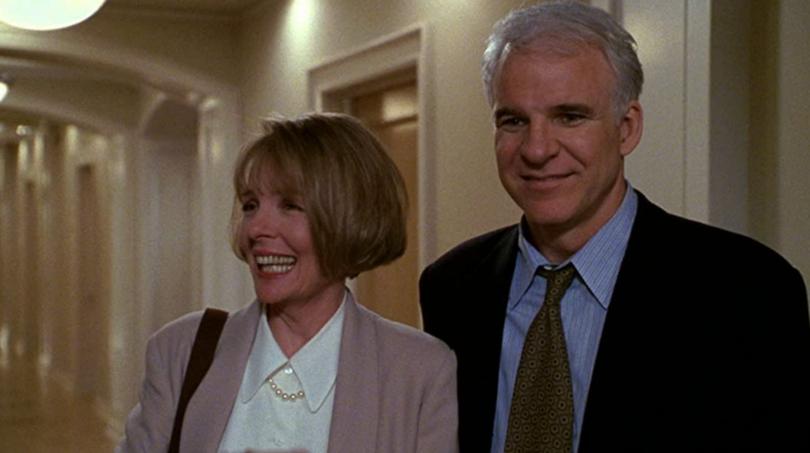Steve Martin documentary series finally reveals the man behind the laughter

By the time Steve Martin was in his early 30s, his hair had already turned grey. For many people, celebrities or not, that would’ve brought out the dye bottle, but for Martin, he knew how to make it work for him.
Perhaps one of the reasons Martin has been an enduring presence for decades is he has always seemed the same. When you look back and do the maths on how old (or young) he was in some of his most iconic screen roles, you’d be astounded.
In the mid to late-80s, at the time of Roxanne, LA Story, Three Amigos and Planes, Trains and Automobiles, he was in his early 40s. In Father of the Bride, he was 46 and by the time his character became a grandfather in the sequel, he was only 50.
Sign up to The Nightly's newsletters.
Get the first look at the digital newspaper, curated daily stories and breaking headlines delivered to your inbox.
By continuing you agree to our Terms and Privacy Policy.Which is not to say Martin always seemed ancient, but it has given him something of an enigmatic, ageless quality. He’s a constant in our lives.
The comedy legend is the subject of a new two-part documentary, premiering on Apple TV+ on Friday, called Steve! (Martin) A Documentary in 2 Pieces. Directed by Morgan Neville, it’s an illuminating, poignant and tender look into an extraordinary career and the personal life of a private artist.
Consisting of two one-and-a-half-hour films, the first instalment focuses almost entirely on Martin’s childhood and stand-up career, through Martin’s narration and montages of clips.

Like many public talents, Martin didn’t come from a warm family, which propelled him to seek attention elsewhere. First came a job at Disneyland when he was a teenager, where he learnt the art of magic tricks, enchanted by the ability of performers to beguile audiences.
He parlayed that into a stand-up career at a time – the late 1960s and early 1970s – when comedy was political, a response to the Vietnam War and the Nixon years. But Martin wasn’t political. He was silly, he was loud and he was physical. His “wild and crazy guy” was balloon animals, goofy props and unadulterated joy.

He says his greying hair actually helped him here because it gave him the contrast of someone who seemed like a serious adult but with child-like exuberance. The clips of his sets on stage or on the likes of Johnny Carson’s show really landed his dynamism and energy. Martin was a force.
By the time he quit stand-up in 1981, he was a rock star. His comedy albums had gone platinum, doing numbers no comedian had done before, and he was selling out stadiums.
But he was lonely, his voiceover tells us. He was always on the road and reluctant to let anyone get close to him. Comedy so often straddles that line between tragedy and absurdity and so do many comedians.
The second film in the documentary finds Martin in the present day, now in his mid-70s and, as he claims, the happiest he’s ever been. It took him decades but he has found his tribe and an outlet for his vulnerabilities.
The film’s style shifts and the camera is trained on Martin and his day-to-day. There are now even others, as if to emphasise the richness of his life in this third chapter – his good friend and long-time collaborator Martin Short is a frequent presence, while Jerry Seinfeld, Diane Keaton, Tina Fey and his wife, Anne Stringfield, all shade in the man audiences have watched for decades.
Running parallel to the story of his film career is Martin’s gradual opening on a personal level, especially his friendship with Short and his marriage and late-in-life fatherhood.

As Fey tells us about his onscreen roles, “There’s a melancholy, it’s a bittersweet chocolate bar, it’s Hershey’s special dark, it’s not milk. There is a longing at the centre of pretty much every body he shows us and the only person who can fix it is Martin Short.”
In addition to the cosy and very charming Only Murders in the Building, Martin and Short have been on tour together in recent years, and they’re currently doing a North American run. The behind-the-scenes of the two bouncing jokes off one another highlights that for Martin, he’s a man content to share the stage and share the burden.
For someone who has been in the public eye for almost six decades, Martin still has the power to bewitch audiences.
He performs for the camera a two-card trick. Even in close-up, with the lens focused on his hands and the cards, he somehow manages to pull one over on you. How did he do it? How did he turn those cards around?
Martin is willing to show you more of himself than he ever has before, but it’s still on his terms. The old legend is still holding something back.
Rating: 4/5
Steve! (Martin) A Documentary in 2 Pieces is on Apple TV+ from Friday, March 29

